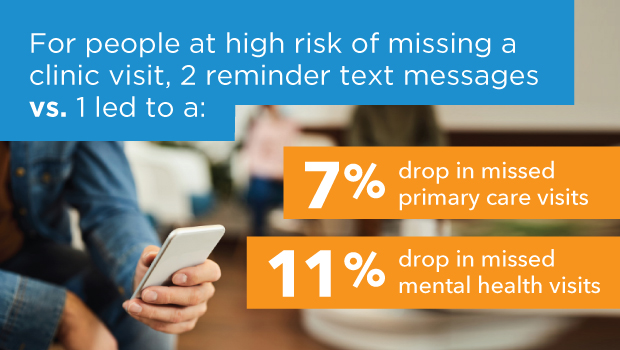Understanding the latest science to help health systems make timely, evidence-based decisions
The challenge
Implementing evidence-based practices is essential to improving patient care and outcomes. But it’s nearly impossible for busy health systems and care teams to keep up with new research being published every day in any given field. To help health systems make informed decisions based on ever-evolving scientific literature, the ACT Center has developed practical methods for conducting rapid evidence scans and summarizing key findings for health system leaders.
The work
Our team scans the environment, reviews research evidence, and distills what we learn into actionable information for our health system and care delivery partners. Our methods are distinct from traditional systematic literature reviews in that they provide more timely information when health systems need to make decisions quickly. This is especially important during times of uncertainty — such as the onset of the COVID-19 pandemic.
Here's a brief summary of our methods:
- To identify research most likely to be relevant to health system decisionmakers, our team has adapted existing rapid evidence scan methods.1,2
- Our search strategies typically include keyword searches in PubMed and Google Scholar; using filters to identify systematic reviews, recent clinical trials, and frequently cited literature; and searching the reference lists of identified studies.
- One or more team members reviews articles against pre-specified inclusion criteria developed using the PICOTS framework and extracts relevant data into summary tables.
- The team reviews and synthesizes findings in consultation with key stakeholders, and then presents the evidence scan to health system decision-makers.
A sample of ACT Center’s rapid evidence scans
Continuity of Care (June 2021)
- How does provider-patient continuity affect outcomes such as patient satisfaction, provider experience, health care quality, and health care utilization?
- What is the relationship between continuity, access to care, and telehealth?
Pain Management Models (Apr 2020)
- What are evidence-based models for primary care-based pain management?
- What are key elements of these models? What is the role of telehealth in these models?
Telemedicine (April 2020)
- What telemedicine care models have the strongest evidence with relevance to KPWA?
- What key elements of existing telemedicine models are most relevant to the KPWA model?
Pediatric Behavioral Health Integration (Sept 2019)
- What are evidence-based models for behavioral health integration (BHI) in primary care for pediatric populations?
- What are recommended staffing approaches for BHI in primary care for pediatric populations?
Reducing Missed Visits (Sept 2018)
- What patient and visit characteristics are associated with “no shows” for appointments?
- What are evidence-based methods for intervening with patients who don’t show up for appointments?
A published study related to this evidence scan looks specifically at reducing missed visits through targeted text messages.
End-of-life and Outpatient Palliative Care (Aug 2018)
- What are the existing and commonly used end-of-life (EOL) care and advanced care planning (ACP) options and their impacts on care and quality of life?
- What are patient and family preferences at EOL?
- How are outpatient palliative care clinics designed, and what are the barriers and successes associated with care delivery related to oncology patients?
Preventing Hospitalizations (May 2018)
- Are there evidence-based health care interventions for reducing inpatient hospitalizations?
Technology Interventions in Primary Care (Mar 2018)
- What primary care based technological interventions lead to improved health and patient experience?
Limitations
Because of the rapid and applied nature of these evidence scans, the reviews are not as rigorous as traditional systematic literature reviews. Important limitations include:
- Search is not as comprehensive.
- In some cases, there may be only 1 reviewer.
- Findings may be less generalizable to other settings and contexts.
- Requires limited/cautious interpretation of findings.
- Provides less in-depth information and detail than a systematic review.
- Requires mindfulness of limitations and potential biases that can occur on tight timelines.
Impact
Through this work, we’ve helped health systems make informed decisions and move quickly in times of uncertainty. In the absence of ACT Center’s rapid evidence scans, leaders must still make quick decisions. These products provide a summary of directly relevant evidence so leaders can include current research and data as an input in their decision-making.
Citations:
1. Haby MM, et al. Health Res Policy Syst. 2016 Nov 25;14(1):83. doi: 10.1186/s12961-016-0155-7. PMID: 27884208
2. Hartling L, et al. Agency for Healthcare Research and Quality (US); 2015 Feb. Report No.: 15-EHC008-EF. PMID: 25654160.
Featured publications
Ulloa-Pérez E, Blasi PR, Westbrook EO, Lozano P, Coleman KF, Coley RY. Pragmatic Randomized Study of Targeted Text Message Reminders to Reduce Missed Clinic Visits. Perm J 2022;26:21.078. E-pub 5 April 2022. doi.org/10.7812/TPP/21.078. Full text
Blasi PR, Mettert KD, Coleman K, Lewis C, Wagner E, Coghill MN, Dang T, Richards JE. Transitioning patients from outpatient mental health services to primary care: A rapid literature review. Imp Res and Pract. 2022;26:21.078. 14 Sept 2021. doi.org/10.1177/26334895211041294. Full text
Featured resource
Evidence summary on how provider-patient continuity affects patient and health system outcomes
Related news



